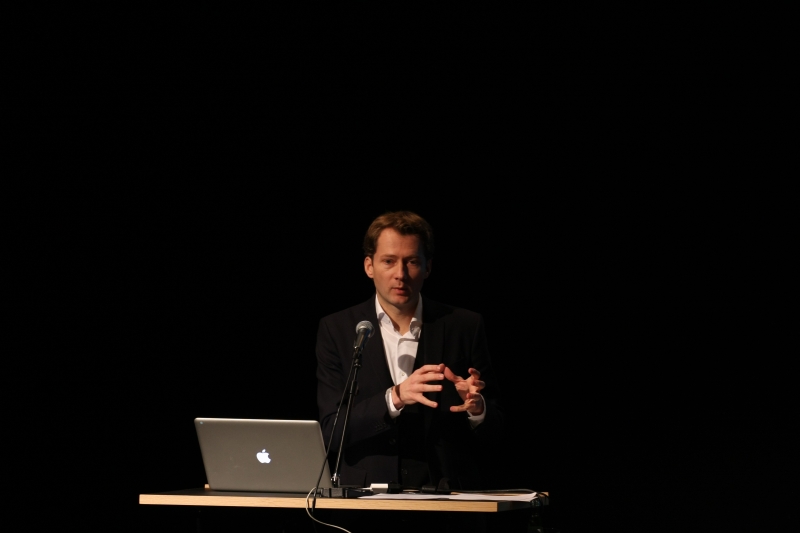At the recent Designtage Brandenburg Design Conference Vitra Design Museum Chief Curator Mateo Kries held the opening keyword speech.
Under the title "Open Design! Why we need to reinvent design" Mateo Kries extended the thoughts presented in his 2010 book "Total Design" to explore where design is going, what are going to be the important themes in the future, and so by extrapolation explore the contemporary nature of the term "design". For as the spray paint on the walls so often says: "How do you define design when everything is design?"
Following his speech we caught with up with Mateo Kries to explore a couple of points in a little more detail.......
(smow)blog: If one looks back, one has the feeling that "design" always used to be fairly clearly defined. Where did it go wrong? Did it go wrong? Or, why do we currently have such an unclear definition for and of design?
Mateo Kries: I think one should understand it as a sort of pendulum, in some epochs the definition opens, one understands more, and then there comes a break, a caesura, and it goes in the other direction. I think, for example, that the recent financial crises changed quite a lot: before 2009 one regularly found projects at design fairs that were over the top, "design art" became a popular phrase, and then after 2009 such projects quickly vanished and themes such as DIY or digital technology became more prevalent. And so no I don't see the current situation as the result of an undesirable or abnormal development but rather as being in context of a normal relationship between social development and creative development, where one influences the other.
(smow)blog: But can one say that "control" of the design term today lies too heavily with commerce, everything is design even when it isn't?
Mateo Kries: The public understanding of what design is is currently somewhat too heavily controlled by commercial interests, be that marketing departments or discussions about "creative locations". My wish would be that, as with art or architecture, that design is discussed and understood as a cultural factor and not just as a commercial, economic factor, because that then influences how the wider public understand design. For that design needs a stronger lobby, be that, for example, newspaper feuilletons, universities or museums; important is that these institutions have a public voice as strong as those of the other players because then a more informed discussion can take place, a discussion which more clearly separates the cultural and commercial aspects of the term design.
(smow)blog: In that context, can one also give designers a portion of the blame in that they too often, or perhaps too easily, allow the lines to become blurred....
Mateo Kries: I wouldn't apportion blame in that sense, and in general I think it has more to do with shortcomings in design education. Many design courses are too heavily focussed on training designers simply to be service providers, which is naturally important and is something designers must be able to do; however, design theory and design history are rarely taught. In university arts departments art historians are trained, or architecture historians, but, for example, how many German universities have a Professor of Design History? In general I think design education needs to become more inter-disciplinary, in sense of, for example, more natural sciences, technical sciences or in terms of design theory, for me that would be a welcome development.
(smow)blog: To end, today you talked a lot about the future of design, about the future role of, for example, biotechnology and light technology or geographic changes in design. It is a big question but what does that mean for the future of designers? Must designers change the way they think and approach their remit?
Mateo Kries: Naturally an important role will remain co-operations with manufacturers of consumer products, advertising and the like; however, I think there will also be a greater need for designers to actively research at the sharp end of innovation, be that biotechnology, material technology, digital technology and that designers will increasingly be asked to look at how one can transform innovation into real objects, projects, services etc... Such is carried out at the moment but is something that will be come increasingly important, for all as such technologies become more readily available.
